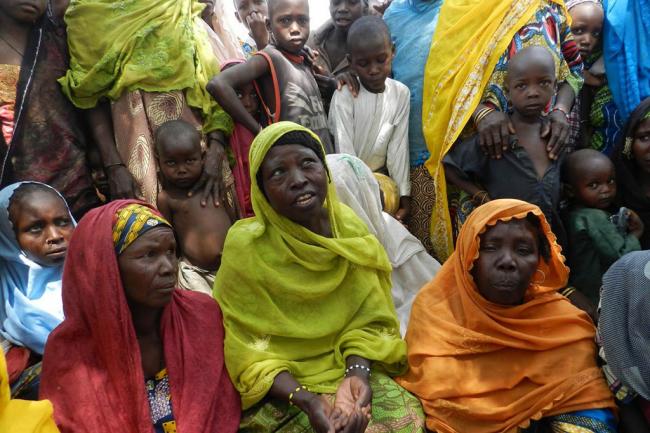
Senior UN relief official welcomes US and EU funding for emergency response in Lake Chad Bas
In a joint news release, partly produced by the UN Office for the Coordination of Humanitarian Affairs (OCHA), the US recognised the efforts made by governments in the region, and will increase its support for UN agencies and non-governmental organizations by $27 million to a total of $112 million in the current fiscal year, while the EU will allocate €58 million in 2016 to support those most in need. The EU allocation forms part of the EU’s overall humanitarian action in the wider Sahel region, amounting to more than €200 million this year.
“I am very grateful for this funding from the United States and the European Union. Together with support from the Central Emergency Response Fund which has provided over $102 million for humanitarian aid in the Lake Chad Basin, UN agencies and their partners can scale up their work for survivors of the crisis, including displaced persons and communities hosting them, in line with our 90-day plan which we issued at the beginning of July,” the UN Regional Humanitarian Coordinator for the Sahel, Toby Lanzer, said in the joint news release issued late last week.
“I very much hope that other members of the international donor community will follow the US and EU’s example and support our response in order to avoid a deeper, broader and more costly crisis in the months to come,” he added.
According to OCHA, the Sahel region continues to be affected by extreme poverty, chronic food insecurity and malnutrition, climate change, and violent extremism. The particular situation in the Lake Chad Basin – which borders Cameroon, Chad, Niger and Nigeria – has been the subject of discussions at regional dialogues and at the UN Headquarters. Some 9.2 million people in the area are in need of humanitarian aid, 5.2 million face severe food insecurity and are in need of emergency food assistance, and 2.7 million have been forced to leave their homes and those hosting the displaced are sharing their already very limited resources. In addition, the local population is facing a very steep increase in the price of food.
The US and EU funding announcements follow a joint visit to Cameroon, Chad and Niger by Lanzer, the US Assistant Secretary of State for Population, Refugees and Migration, Anne Richard, the EU Commissioner for Humanitarian Aid and Crisis Management, Christos Stylianides.
In the joint news release, both Richard and Stylianides also expressed concern over the violence facing refugees and displaced people in countries surrounding the Lake Chad Basin, and also called on the international donor community to increase their financial support for those affected by the violence.
The joint news release noted that the main priorities of the humanitarian response to the Lake Chad Basin are protection, food assistance, nutrition, healthcare, shelter, emergency education and water, sanitation and hygiene.
The Sahel region covers parts of northern Senegal, southern Mauritania, central Mali, northern Burkina Faso, the extreme south of Algeria, Niger, the extreme north of Nigeria, central Chad, central and southern Sudan, the extreme north of South Sudan, Eritrea and the extreme north of Ethiopia. According to OCHA, across the entire Sahel region, more than 23.5 million people face food insecurity, 5.9 million children are malnourished, and at least 4.5 million are displaced by the effects of conflicts.
Photo: FAO/Patrick David
Source: www.justearthnews.com
Support Our Journalism
We cannot do without you.. your contribution supports unbiased journalism
IBNS is not driven by any ism- not wokeism, not racism, not skewed secularism, not hyper right-wing or left liberal ideals, nor by any hardline religious beliefs or hyper nationalism. We want to serve you good old objective news, as they are. We do not judge or preach. We let people decide for themselves. We only try to present factual and well-sourced news.







